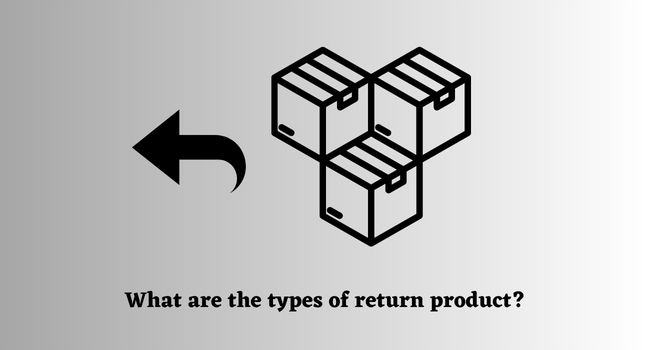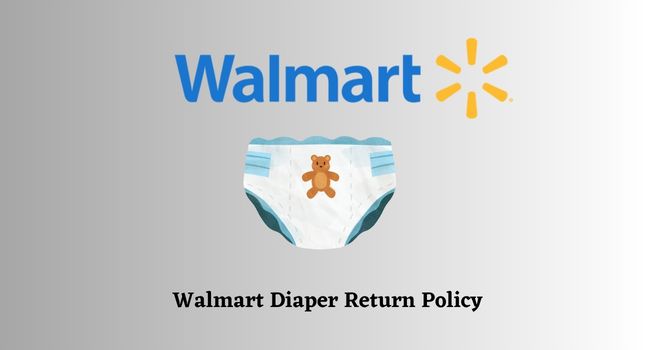What are the types of return product?
Here we cover "What are the types of return product". In the dynamic world of consumerism, returns have become an integral part of the shopping experience.
Understanding the different types of return products is essential for both businesses and consumers alike.
This article aims to shed light on the various categories of return products, providing insights into their characteristics and implications.
What are the types of return products?
1. Defective Merchandise
Defective merchandise refers to products that are flawed, damaged, or malfunctioning upon arrival.
These returns occur when a consumer receives an item that does not meet the quality or functional standards expected.
It could involve anything from electronic gadgets with manufacturing defects to clothing with tears or missing components.
Businesses typically accept responsibility for defective merchandise returns and offer options for repair, replacement, or refund, depending on their return policy.
2. Unwanted or No Longer Needed Items
Unwanted or no longer needed items encompass returns made when a customer realizes they no longer want the product they purchased.
This can occur due to various reasons, such as changing preferences, receiving duplicate gifts, or simply changing one's mind.
Many retailers accommodate such returns and provide refund or exchange options, as long as the items are in their original condition, accompanied by proof of purchase, and fall within a specified return window.
3. Size or Fit Issues
Size or fit issues are commonly encountered in the apparel and footwear industries. Customers may find that the product they ordered online does not match their expectations or fit properly upon arrival.
This prompts them to initiate a return for a different size or style. To facilitate such returns, retailers often offer flexible policies that allow customers to exchange the item for a different size or receive a refund.
Read- Product Return Analysis
4. Damaged during Shipping
Transportation can be a challenging phase for product integrity, and items can get damaged during shipping.
This type of return occurs when a customer receives a product that has been visibly damaged in transit, such as a cracked electronic device or a shattered glass item.
Retailers and shipping carriers generally have policies in place to address such situations, including providing replacements or initiating insurance claims to compensate for the damage.
5. Recalls and Safety Concerns
Recalls and safety concerns arise when a product poses potential risks to consumers due to manufacturing defects, design flaws, or safety hazards.
In these instances, manufacturers or regulatory bodies may issue a recall, urging customers to return the product for repair, replacement, or refund.
This type of return is crucial in ensuring consumer safety and holding businesses accountable for delivering safe and reliable products.
Conclusion
Returns are an inherent aspect of modern-day commerce, and recognizing the various types of returned products is vital for both consumers and businesses.
By understanding the characteristics and implications associated with defective merchandise, unwanted items, size or fit issues, shipping damages, and recalls, individuals can navigate the return process more effectively and enhance their overall shopping experience.
Read- Homedepot Return Policy Without Box
FAQs
Are return policies the same for all types of return products?
Return policies may vary depending on the retailer and the specific type of returned product.
While many businesses have general return policies that cover multiple categories of return products, certain types, such as defective merchandise or recalls, may have specific guidelines or extended return windows to address unique circumstances.
It's always recommended to review the retailer's return policy or contact customer service for clarification regarding the specific type of returned product you wish to make.
Can I return a product without its original packaging?
Retailers often prefer products to be returned in their original packaging to ensure their resale value.
However, depending on the circumstances, some retailers may accept returns even if the original packaging is unavailable.
It's best to review the return policy or contact customer service to understand the specific requirements for returning a product without its original packaging.
How long do I have to initiate a return?
The timeframe for initiating a return varies among retailers and the type of returned product.
Generally, retailers have a specified return window, which can range from a few days to several weeks after the purchase.
It's crucial to familiarize yourself with the return policy and ensure that you initiate the return within the specified timeframe to be eligible for a refund, exchange, or repair.
Are there any costs associated with returning a product?
The costs associated with returning a product depend on the retailer's policies and the reason for the return.
In many cases, if the return is due to defective merchandise or damaged items during shipping, the retailer typically covers the return shipping costs.
However, if the return is due to a change of mind or an unwanted item, the customer may be responsible for the return shipping fees.
It's important to review the retailer's return policy to understand any potential costs involved in returning a product.
Can I return a product purchased online to a physical store?
Many retailers offer the option to return online purchases to their physical stores, but this may not be applicable for all types of return products.
It's advisable to check the retailer's return policy or contact customer service to determine if returning the specific type of product to a physical store is possible.
Some retailers may have different return processes in place for different types of return products, including options to return in-store or through the mail.
Remember, individual retailers may have unique policies and procedures for handling returned products, so it's essential to refer to their specific guidelines or seek assistance from their customer service representatives when dealing with a return.




Comments
Post a Comment